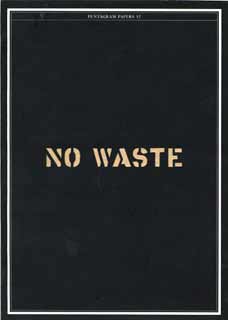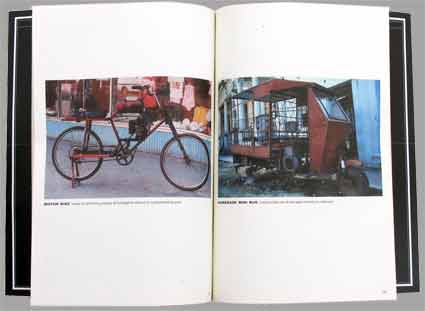- diagramas ujamaa (modelo)
- diagramas ujamaa (modelo)
More info here: http://www.ernestooroza.com/category/ujamaa/
More info here: http://www.ernestooroza.com/category/ujamaa/
Declaración de Necesidad Una entrevista a Ernesto Oroza por Guillém Ferrán para d[x]i
Cultura & Post-diseño
Numero 36, Ano IX
Statement of Necessity by Ernesto Oroza
Foreword: Gean Moreno
Paperback
Publisher: Alonso Art and BookSurge Publishing (November 11, 2008)
ISBN-10: 1439216657
ISBN-13: 978-1439216651
Book documenting the exhibition Statement of Necessity by Ernesto Oroza, at Alonso Art in November-December, 2008. The book features the 20 color photographs exhibited. www.alonsoart.com
DESIGN AND ETHICS
–Gean Moreno
The qualifier “popular” in popular design aims, it seems, to bracket the everyday call-and-response of necessity and ingenuity in order to re-locate an entire field within definitions supported by less pedestrian paradigms. Design, the presence of the qualifier seems to insinuate, is nothing as basic as a practice characterized by gestures through which objects are optimized to respond to immediate needs. We should enhance our definition of the discipline by speaking of it as an autonomous creative field with a clear historical trajectory and stellar practitioners; by recalling the matrix of institutions that legitimize its products; by considering it in relation to markets and mass production; by pumping out reams of text that explain its complex interaction with clients, demographics, and media. We should, in other words, define design exclusively in relation to the shape it has taken as a response to the pressures applied by the material conditions of late capitalism. Anything else would be utopian thinking, academic exegesis, theory, or simply naïveté.
Ernesto Oroza came of age as a designer—and as something other than a designer: a meta-designer, a theoretical designer, an ex-designer (as Marti Giuxé says), an artist—in a context in which the material conditions that have shaped design as the global practice that we know and celebrate didn’t exist. Graduating from Havana’s Instituto Superior de Diseño in 1993, he entered the field at a moment when, due to the fall of the Berlin Wall and the end of Soviet subsidies, Cuba was undergoing its most calamitous economic crisis—the Special Period in Times of Peace. This crisis shut down the production of any new objects on the island and nearly eliminated all imports of non-essential foodstuffs and the like. The lesson of this time, Oroza has argued, is that “Cubans understood that they would have to meet their own needs, as they lived in a country where the State owned all productive capabilities. Urgency placed the individual at the center of the country’s survival.”[1] Scarcity marked the moment. And this opened a gulf between emergent needs and the availability of products that responded to these needs. A broken fan couldn’t be replaced by a new one. The possibility of a one-to-one exchange of objects vanished. As the life of things came to an end, there was nothing to take their place. And so aged and broken objects had to be kept in circulation, readjusted and reconfigured to respond to unexpected demands. A broken phone could serve as the base of a fan; a dinner tray became a TV antennae.
Oroza has devised a number of terms to describe the processes that characterized this period of massive popular design. He has spoken of technological disobedience as a fundamental aspect of it, and he uses the term to highlight the fact that it became a common practice to reroute objects intended to respond to a particular need so that they could respond to a completely different one—one that was not envisioned in the processes of design and production from which it emerged. The phone-as-fan-base and the dinner-tray-as-TV-antennae serve as paradigmatic examples. Rather than user-end empowerment that digital technologies have opened up, what we have here is need trumping intended function. It’s not picking whatever song you want, but using the iPod as a wedge to hold a doorjamb in place. Not selecting the quality of gasoline at the pump, but using the yellow plastic gas tank as a sign for your taxi.
When enough of these “re-formatted” objects begin to appear, enough to significantly change the morphology of a city or a town, it could be said that this popular design has turned into something else: a popular urbanism; a way of irrevocably altering urban texture. In other words, the individual gestures through which objects are synthetically reformatted to respond to emergent needs—that is, the individual gestures of technological disobedience—coalesce into a large collective force that alters the shape of a city. Oroza has called this collectivization and transcendence of individual instances of disobedience familial urbanism. That is, an urbanism that begins with the alterations that take place in each household, responding to the needs of each family. The familial, however, in becoming urbanism is an example of the whole being more than the parts: as urbanism, it becomes a force the effects of which exceed each of the individual instances that comprise it.
For over a decade, Oroza has documented and theorized this new logic of popular design, always looking for precise concepts that express its singularity. The form of design that he has dealt with is often thought of in terms of recycling in the West, but surrendering it too quickly in this kind of discourse occludes one of the things that has been central to Oroza’s project: naming the engine that drives this mode of design, rather than naming its effects. Recycling as such is a process. What has interested Oroza is the root cause: the question of necessity; that is, an understanding of the local material conditions that underscore the emergence of this explosion of popular design. It’s a matter of keeping an eye on the context, on the historical moment. He has said: “Necessity has been stigmatized in Western culture. If you find yourself in need, you are considered weak. If you express demands for these needs to be met, you are considered vulgar. Since the 1990s, Cubans have done violence to this stigma. Each object produced or solution discovered has been a statement of principle.”[2]
Responding to necessity, then, Oroza considers that each of these objects have an ethical dimension: each is, as he says, a statement of principle and freedom, a response against a plummeting in the quality of living conditions, against a disintegrating social fabric, and, lastly, against an eroding urban texture. This is why Oroza refuses to participate in the discussion of Havana as a ruin. Such a discourse takes a sweeping view of the city, focusing on its dilapidated surfaces, and ignoring the ground-level and “hidden” gestures of its inhabitants, the new behaviors and altered objects that optimize their responses to immediate needs, to pressures that emerge from existing and local material conditions. Behind the crumbling buildings of the city, Oroza argues, there is another interior city, or city of interiorities: one of architectural up-datings and object re-designs that speak the truth of their moment and the ethics of their producers.
[1] Moreno, Gean, “Object as Index: Ernesto Oroza in Conversation with Gean Moreno,” Art Papers, May-June, 2008, p.25
[2] Moreno, Ibid., p.25
Necessitas caret lege se puede traducir del latin como: la necesidad carece de ley. La frase fue mal interpretada en el castellano como: la necesidad tiene cara de hereje. El desvío debió fomentarse entre los desconocedores del latin, entre las clases no educadas. Es posible que al pronunciarla encontraron resonancias entre caret y cara, y lege y hereje. Esta deformación fue recogida y recreada por Luis de Góngora en uno de los versos de Dineros son calidad:
“No hay persona que hablar deje
al necesitado en plaza,
todo el mundo le es
mordaza,
aunque él por leñas se queje,
que tiene cara de hereje,
y aun fe, la necesidad:
verdad.”
La deformación popular mantuvo la connotación disidente de la locución original y lo hizo con la figura del hereje que puede ser entendido como alguien que no reconoce la ley o el orden. Pero puede decirse que la esencia de la frase original se sostiene con el sacrificio de la gramática al asumirse una forma no resuelta. La utilidad y significado de la máxima se ponen de manifiesto en su propio sacrificio.
NO WASTE 2003
Pentagram Papers 32. Pentagram Design, London, 2002. A project by Ernesto Oroza and Laboratorio de Creación Maldeojo with design by Fernando Gutiérrez and an introduction by Alex Marashian. This 2003 edition by the international agency Pentagram Design contains pictures of vernacular objects created as a result of economic penury.
More info at The Pentagram papers. Edited by Delphine Hirasuna, Pentagram Partners.
Featured on Wallpaper Magazine: http://www.wallpaper.com/gallery/art/the-pentagram-papers/17051794#29153
Featured on Cool Hunting: http://www.coolhunting.com/design/pentagram-no-waste.php

